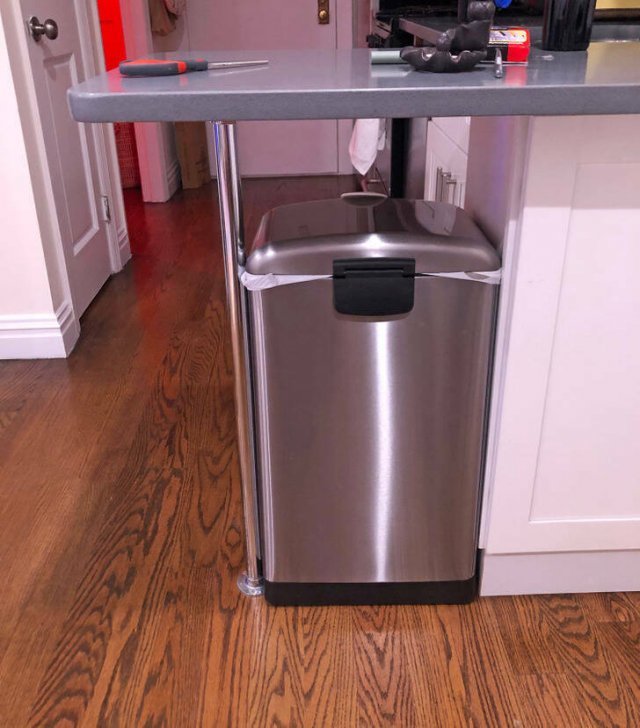Log in
Statistics
We have 475 registered usersThe newest registered user is Menupanda
Our users have posted a total of 44827 messages in 6602 subjects
THAT’S ENTERTAINMENT
CLICK ON ANY OF THESE LINKS TO FIND OUR EXTREME ENTERTAINMENT
UPDATED :
71 WGT TUTORIALS & 32 YOUNG46 TUTORIALS
CLICK HERE TO SEE OVER 100 YOUTUBE VIDEO TUTORIALS . FROM WGTers , WGT & YOUNG46 FORUM UPDATE
TO THE MANY WELCOME GUESTS . THIS FORUM IS NO LONGER A COUNTRY CLUB WEBSITE FOR A WGT COUNTRY CLUB . PLEASE FEEL FREE TO READ THE FORUMS.
THERE ARE MANY TOPICS OF INTEREST . OR NOT . THIS WEBSITE IS AN INFORMATION AND ENTERTAINMENT WEBSITE ONLY .
MUCH OF THE CONTENT IS ARCHIVES OF PURPOSES PAST .
THERE ARE SOME MORE CURRENT TOPICS .
REGISTRATION IS NOT NECESSARY TO READ THROUGHOUT .
REGISTRATION IS EASY AND FREE . THIS IS AN AD FREE WEBSITE . NOTHING IS EVER REQUESTED FROM REGISTERED MEMBERS .
REGISTRATION ENABLES COMMENTING ON TOPICS . POSTING NEW TOPICS . FULL ACCESS TO THE WEBSITE IMAGE HOST . WHICH IS A VERY COMPLETE AND CONVENIENT TOOL .
PLEASE ENJOY .
TIER & AVERAGE REQUIREMENTS
BASIC LEVEL AND AVERAGE REQUIREMENTS , AND SATURATION

WHILE YOUR HERE
WHILE YOUR HERE :
CHECK OUT THE INCREDIBLE PHOTOGRAPHY IN
MY SERIES
THIS USED TO BE THE HOME OF OUR WORLD CLOCK . WHICH CAN NOW BE FOUND IN ITS OWN FORUM ON THE MAIN PAGE ..
THERE ARE MORE WORLD CLOCKS INSIDE HERE .
WORLD CLOCK
FB Like
TRIVIA GENIUS * The World’s Biggest Water Sources, From Oceans to Aquifers *
Page 1 of 1
 TRIVIA GENIUS * The World’s Biggest Water Sources, From Oceans to Aquifers *
TRIVIA GENIUS * The World’s Biggest Water Sources, From Oceans to Aquifers *
The World’s Biggest Water Sources, From Oceans to Aquifers
Water covers about 71% of Earth’s surface, from the moisture in the soil to the mightiest ocean. It supports the lives of more than 7 billion people, as well as billions of plants and animals. We depend on it not just to sustain our bodies, but also to grow food, manufacture goods, and generate electricity — not to mention how important it is to smaller household tasks such as showering, washing dishes, and doing laundry. Humans have devised amazing technology to extract water from the environment to drink, cultivate crops, and sustain growing cities, but even so, only a very small percentage of Earth's water is usable for our needs. Here are the world’s major water sources.Undrinkable Oceans
 Credit: Luciano Santandreu/ Shutterstock
Credit: Luciano Santandreu/ ShutterstockAlmost all of the water on Earth — about 97% — is found in the world’s oceans, seas, and bays, totaling 321 million cubic miles in volume. Virtually none of it is used to supply drinking water. However, some arid coastal regions have invested in plants for desalination — the process of removing salt, minerals, and other contaminants from seawater — to produce fresh water. Saudi Arabia is home to the world’s biggest such plant, which can pump out 273.8 million gallons per day.
Israel’s first desalination operations began in the 1970s, and now provide more than a quarter of its usable fresh water. California’s recent droughts have also spurred more interest in desalination. The state has 12 plants now, but plans for additional facilities have faced opposition due to high costs, energy needs, and environmental concerns.
Frozen Fresh Water
 Credit: Cristian E Rodriguez/ Shutterstock
Credit: Cristian E Rodriguez/ ShutterstockOutside of oceans, seas, and bays, the remaining 3% of Earth’s water is fresh and found in some surprising places. Much is frozen in the form of two colossal ice sheets. Antarctica’s 5 million-square-mile ice sheet is roughly the size of the lower 48 U.S. states and Mexico put together. Greenland’s ice sheet, at 656,000 square miles, covers an area slightly smaller than Alaska. More frozen fresh water is locked up in the world’s glaciers and areas of permanent snowpack, located around the poles as well as in high-elevation mountain ranges like the Himalayas, Andes, Alps, and Rockies. Collectively, these sources contain 68.7% of Earth’s fresh water, but less than 2% of Earth’s total water.
Some glacier systems feed into rivers that run through arid regions and provide critical sources of water for downstream communities. The glaciers in Central Asia’s Tian Shan mountain range, for example, provide water for major cities in Kazakhstan, Kyrgyzstan, Uzbekistan, and northwest China. Elsewhere, La Paz, Bolivia, once relied on water from the Tuni glacier for drinking and crop irrigation, but the warming climate has reduced it to less than half a square mile in size.
Accessible Aquifers
 Credit: wi6995/ Shutterstock
Credit: wi6995/ ShutterstockGroundwater makes up 30.1% of Earth’s freshwater supply. This water is found in aquifers, the geological term for underground rock formations that are saturated with water, formed over millions of years in different types of rock and sand. In the U.S. alone, dozens of “principal aquifers” provide potable water to 130 million people. This vital supply can be accessed in a few ways: Property owners can dig wells directly into the saturated ground, municipalities can pump water out of the ground for public water systems, and the water can escape on its own via springs. Florida, for example, is blessed with a massive limestone aquifer that erupts in crystal-clear springs.
Surface water, comprising 1.2% of the world’s fresh water, encompasses permafrost, lakes, rivers, swamps, wetlands, soil, atmospheric moisture, and even “biological water,” which is the water contained in living things such as plants and people. Those who don’t obtain drinking water from aquifers will get it from lakes, rivers, and human-made reservoirs replenished by rainfall. New York City’s water supply, serving a metropolis of 8.5 million people, comes from three reservoir systems; almost all of the water flows into the city by gravity rather than pumping.
Earth’s Wettest Regions
 Credit: worldclassphoto/ Shutterstock
Credit: worldclassphoto/ ShutterstockBrazil is the world's most water-rich country, thanks to the 4,000-mile-long Amazon River, its thousands of tributaries, and thousands of square miles of rainforest. Russia comes in second on the strength of Lake Baikal, which contains one-fifth of the world’s liquid fresh water, and thousands of rivers and streams. Behind Russia, three-quarters of the United States’ supply is in surface water, with the remainder in aquifers. Canada and China round out the top five wettest countries.
Water on the Move
 Credit: Viktoriya Krayn/ Shutterstock
Credit: Viktoriya Krayn/ ShutterstockThe availability of water resources is always in flux due to factors like drought and high temperatures. Climate change is likely causing planet-scale changes in the distribution of water on Earth, with some regions seeing steady loss. The Greenland and Antarctic ice sheets are releasing billions of tons of fresh water into the world’s oceans annually, which is a major driver of sea-level rise. On the other hand, an ongoing NASA study, the Gravity Recovery and Climate Experiment (GRACE), has found that many of the world’s aquifers are in danger of running dry because water is being pumped out faster than it can be replaced by natural processes. The research so far shows a distinct trend: Earth’s wet places are quickly getting wetter, and the dry areas are getting drier.
Because of the unpredictability of water resources and supply, in 2002, the Environmental Protection Agency (EPA) implemented several long-term strategies to help conserve water, including monitoring and tracking water meter usage, optimizing cooling tower efficiency, and minimizing landscape irrigation. Thanks to these strategies, EPA reduced its water intensity by 49.7% in 2020 compared to 2007.
 Similar topics
Similar topics» TRIVIA GENIUS The World’s Most Poisonous Animals
» TRIVIA GENIUS *What does "Volkswagen" mean?*
» TRIVIA GENIUS QUIZ
» TRIVIA GENIUS * How did November get its name? *
» TRIVIA GENIUS * What Is Boxing Day? *
» TRIVIA GENIUS *What does "Volkswagen" mean?*
» TRIVIA GENIUS QUIZ
» TRIVIA GENIUS * How did November get its name? *
» TRIVIA GENIUS * What Is Boxing Day? *
Page 1 of 1
Permissions in this forum:
You cannot reply to topics in this forum
 Events
Events















































































» AWE WITTLE PUPPIES BUNNIES & KITTIES...5
» GIRL FISHING...2
» GIRL FISHING
» HISTORY FACTS *Which President was at Lincoln's funeral? *
» MAY NATIONAL CELEBRATION DAYS MAY 6 2024
» AS ETASKI * Etaski just shared: "Eris Book Sale Today Only! My Website Status, etc." *
» HISTORY FACTS * The strangest recipients of WWII medals *
» WISE TRIVIA QUIZ *Which historical figure allegedly said, "let them eat cake"? *
» WISETRIVIA ANSWER PAGE
» QUIZ TREAT QUIZ * What is the meat from a calf called? *
» QUIZ TREAT ANSWER PAGE
» DICTIONARY SCOOP * 10 Of The Weirdest Extinct Animals That Roamed The Earth *
» MAY NATIONAL CELEBRATION DAYS MAY 5 2024
» VERY SEXY GIFS...6